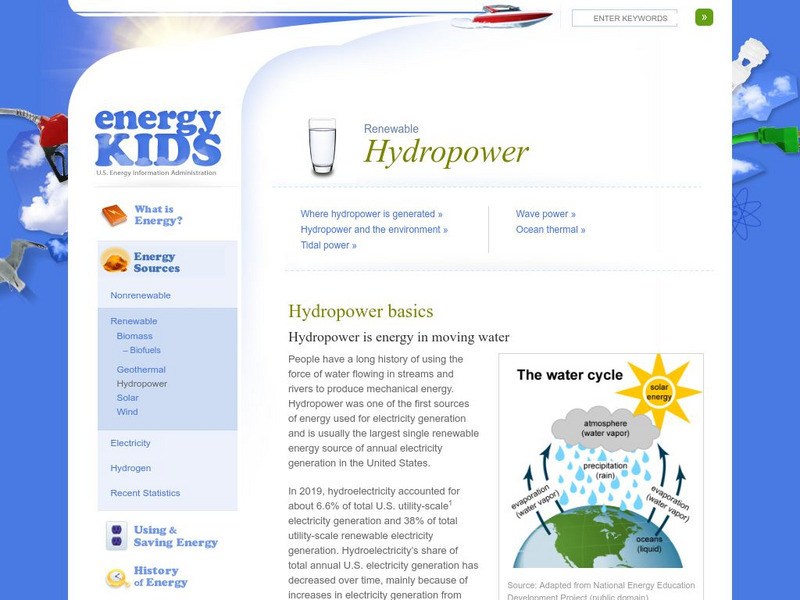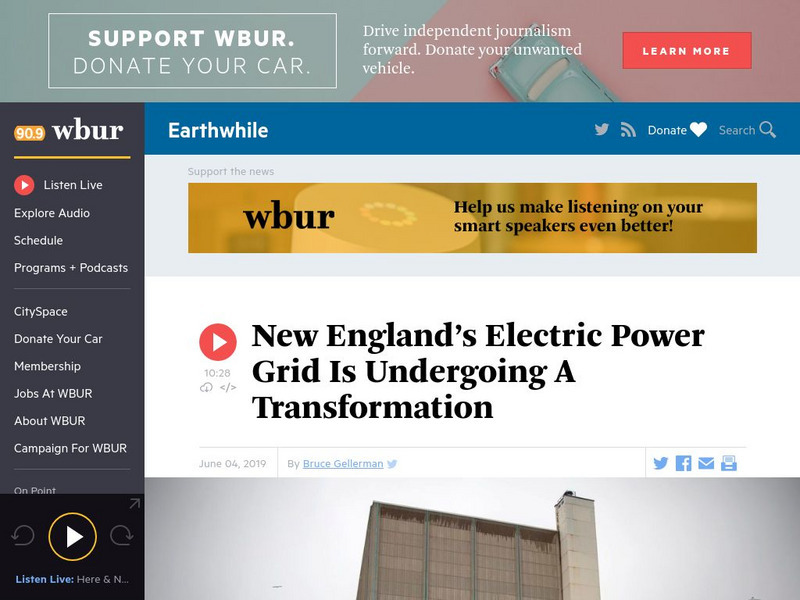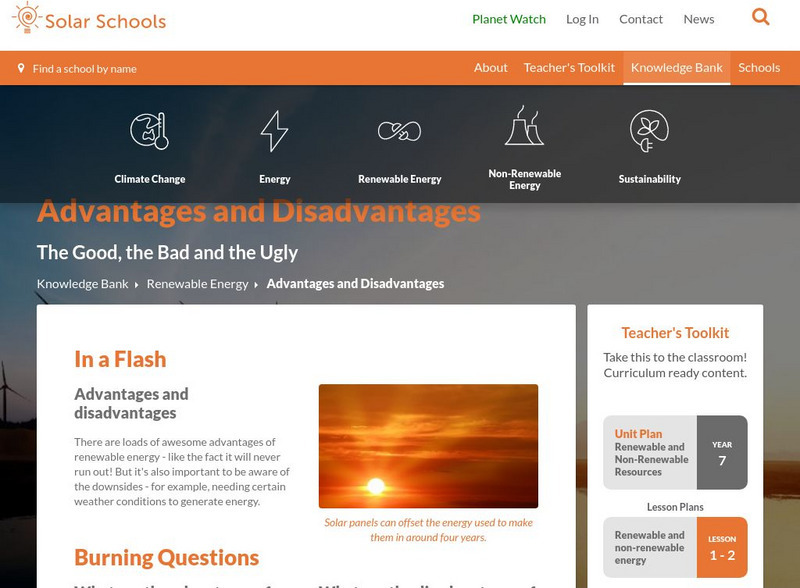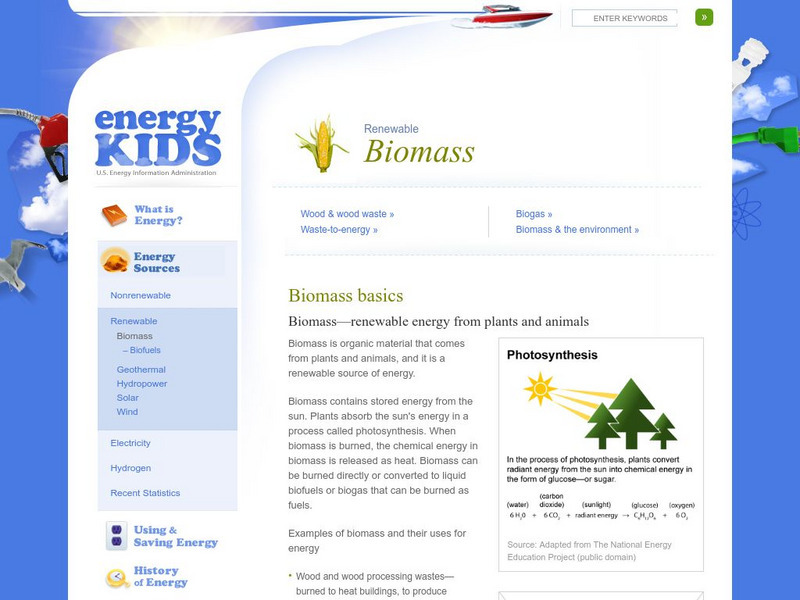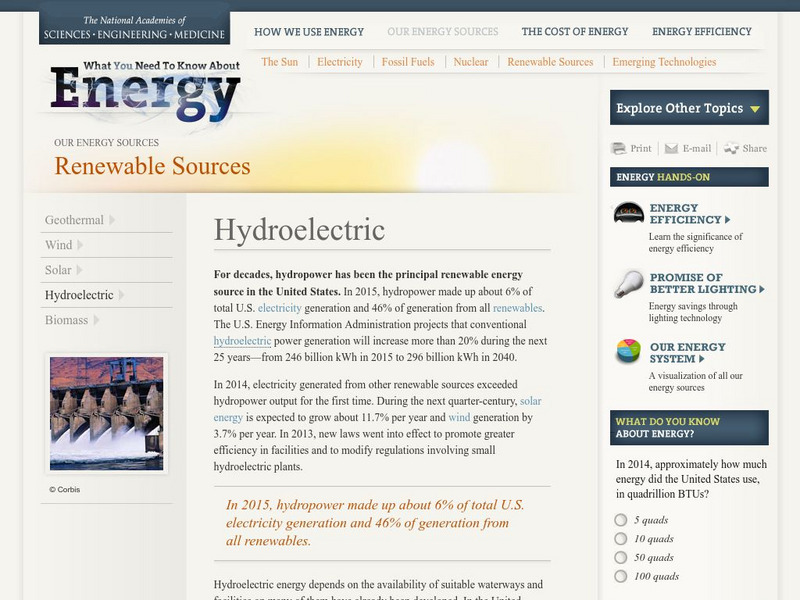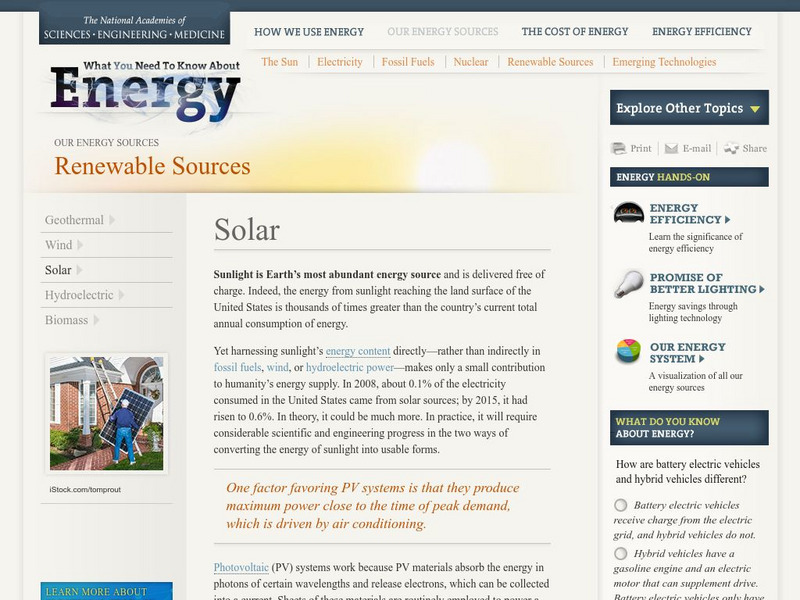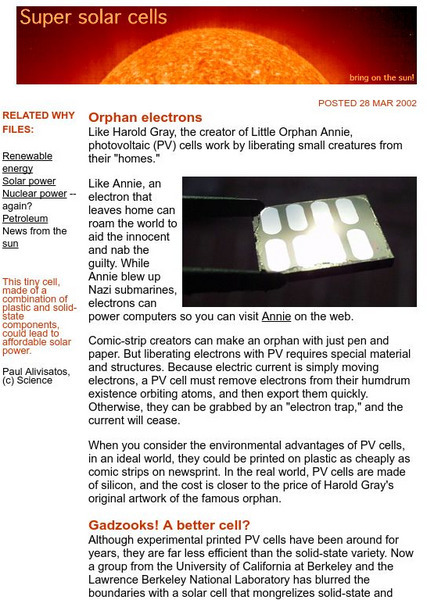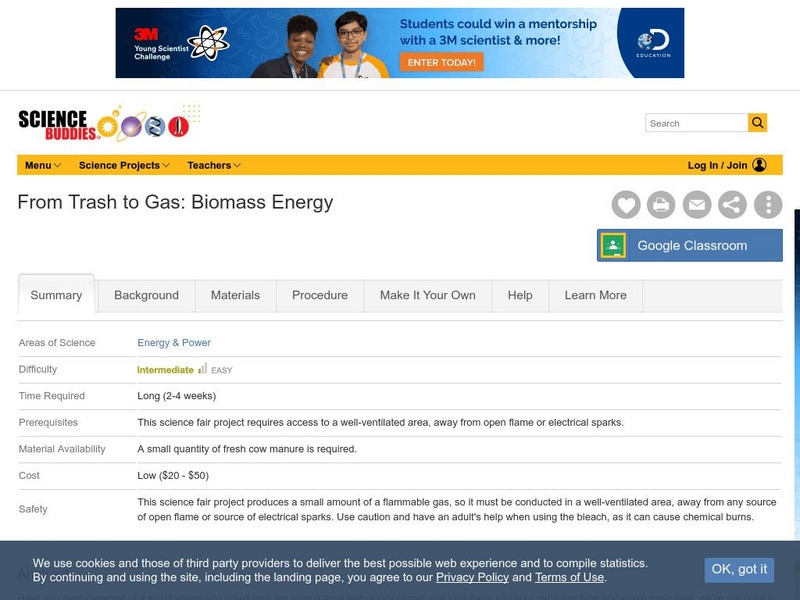US Energy Information Administration
U.s. Eia Energy Kids: Energy Sources: Renewable
Find out what renewable energy is and the role it plays in meeting energy needs. Renewable energy sources include biomass, hydropower, geothermal, wind, and solar.
eSchool Today
E School Today: Renewable Energy Sources
Learn what renewable energy is, the different types, and why it's important to conserve energy.
National Geographic
National Geographic: Non Renewable Energy Resources
This lesson is a simulation that has students looking at consumer, municipal, and corporate perspectives towards nonrenewable energy resources. Includes student handouts.
US Energy Information Administration
U.s. Eia Energy Kids: Energy Sources: Renewable
Learn about renewable energy sources including biomass, which includes biofuels, hydropower, geothermal, wind, and solar.
Other
Irena: How to Transform Energy System and Reduce Carbon Emissions
Information about renewable energy and how the world's energy system must continue to transform in order to combat climate change. Presents statistics about what different countries are doing to use more and more renewable energy...
Energy4Me
Energy4me: Energy Sources of the World [Ppt]
Learn about the many different energy resources available from our Earth. Find out the pros and cons of each type: both renewable and nonrenewable.
National Academies of Sciences, Engineering, and Medicine
The National Academies: Our Energy Sources
The many sources of energy production in the United States are described in this overview. Included are traditional sources, renewable sources, and new energy production technologies.
US Energy Information Administration
U.s. Eia Energy Kids: Hydropower: Energy From Moving Water
Of the renewable energy sources that generate electricity, hydropower is the most often used. Learn other interesting facts about hydropower as the pictorial illustrations bring the information to life.
Texas Education Agency
Texas Gateway: Work, Energy, and Energy Resources: Conceptual Questions
This page provides a list of 26 questions covering the major concepts in Chapter 7: Work, Energy, and Energy Resources from the AP Physics online text.
Annenberg Foundation
Annenberg Learner: The Habitable Planet: Energy Challenges
With this resource, users join investigators in the exploration of humans' use of and dependence on the many energy resources. Learn about new technologies such as carbon capture and sequestration as an alternative to reduce our carbon...
University of California
Understanding Science: Cold Fusion: A Case Study for Scientific Behavior
Major issue--the energy sources currently available to the world all have major drawbacks in the long term. Oil is efficient but leads to climate change. Coal is plentiful but polluting. Solar energy is appealing but only as dependable...
US Energy Information Administration
U.s. Eia: Energy Kids: Renewable Energy: Solar
This is a resource on solar energy, photovoltaic energy, solar thermal heat, solar thermal power plants and other forms of energy.
US Department of Energy
U.s. Department of Energy: Energy Sources: Solar
The U.S. Department of Energy provides links pertaining to solar energy. Understand the current technologies and issues with this resource.
Other
Student Energy: Alternative Energy
Provides the definition of alternative energy and how it differs from the definition of renewable energy. Includes a list of links to some excellent resources.
Other
Wbur: New England's Electric Power Grid Is Undergoing a Transformation
This article discusses New England's developing hybrid power grid, a network that relies on a variety of energy resources, including fuels and alternative energy sources and technologies. The ongoing transformation to renewable energy is...
Other
Solar Schools: The Advantages and Disadvantages of Renewable Energy
One major advantage with the use of renewable energy is that as it is renewable it is therefore sustainable and so will never run out. Renewable energy facilities generally require less maintenance than traditional generators. Their fuel...
Council for Economic Education
Econ Ed Link: Be an Energy Saver
This lesson focuses on the scarce and non-renewable nature of fossil fuels in order to stimulate student thinking about energy conservation. It emphasizes the fact that saving energy can be good for the wallet as well as the earth's...
US Energy Information Administration
U.s. Eia Energy Kids: Energy Basics
Learn about the definition of energy, the forms that it comes in, and the difference between renewable and nonrenewable sources.
US Energy Information Administration
U.s. Eia Energy Kids: Renewables: Biomass
Comprehensive overview of the use of biomass as a renewable energy source. Learn what it is, its forms, its uses, and its impact on the environment.
National Academies of Sciences, Engineering, and Medicine
The National Academies: Renewable Sources: Hydroelectric
Hydroelectric power has been a major source of energy production in the United States. More recently, other alternative energy sources have taken some of its market share. Hydroelectricity has both advantages and disadvantages, briefly...
National Academies of Sciences, Engineering, and Medicine
The National Academies: Renewable Sources: Wind
The status of wind energy production in the United States is described, with the advantages and disadvantages of this alternative energy source.
National Academies of Sciences, Engineering, and Medicine
The National Academies: Renewable Sources: Solar
Solar energy is an appealing alternative to conventional sources of energy because it produces no greenhouse gases. An overview of its advantages and disadvantages is presented here.
University of Wisconsin
The Why Files: Super Solar Cells
An understandable description of modern research that is currently being conducted to develop a more efficient photovoltaic (solar energy) cell. It also contains links to other pages on renewable energy sources.
Science Buddies
Science Buddies: From Trash to Gas: Biomass Energy
Have you ever dreamed of a world where you could take the scraps from last night's dinner and toss them into your car's fuel tank and make gas? Well, we're not quite in "Back to the Future" yet, but in this energy science fair project,...
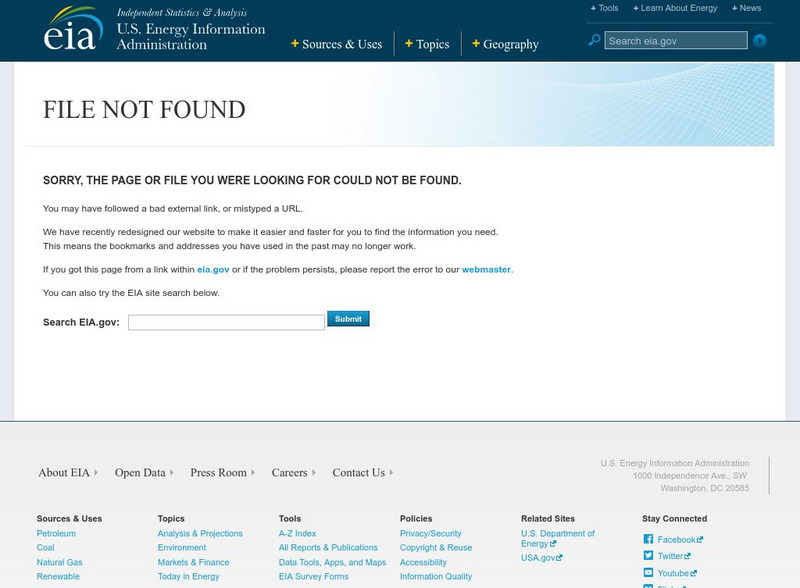

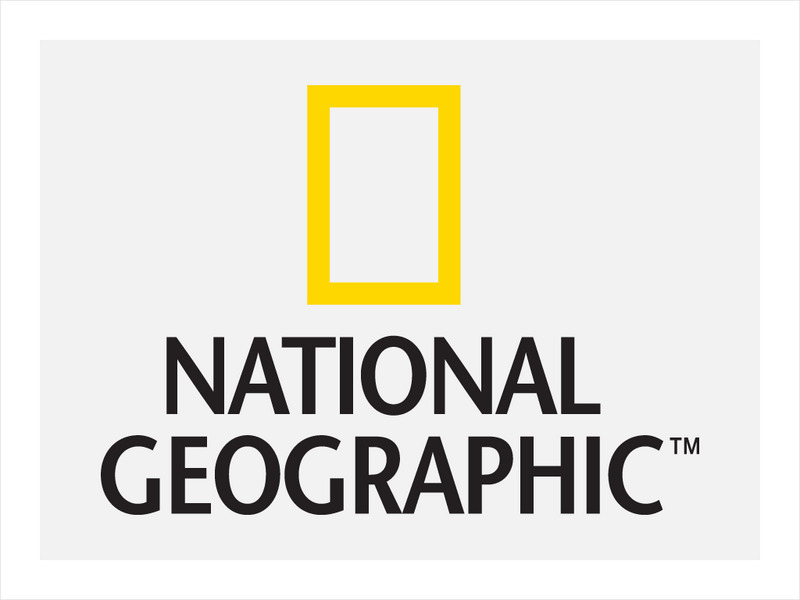

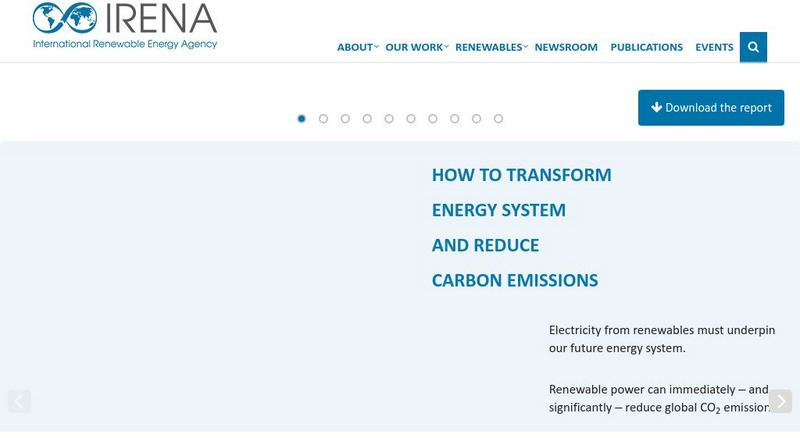
![Energy4me: Energy Sources of the World [Ppt] PPT Energy4me: Energy Sources of the World [Ppt] PPT](https://d15y2dacu3jp90.cloudfront.net/images/attachment_defaults/resource/large/FPO-knovation.png)

